#vespertilionidae
Text
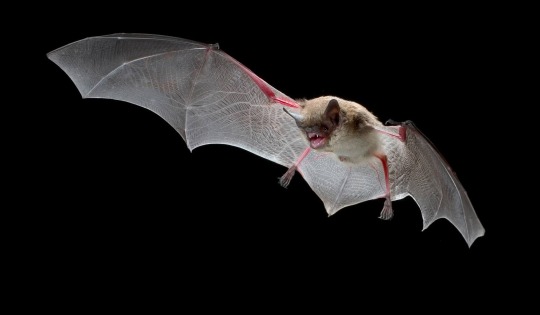
Little Brown Bat (Myotis lucifugus), family Vespertilionidae, found in much of the United States and Canada
ENDANGERED.
photograph by Michael Durham
Bat Conservation International
461 notes
·
View notes
Photo
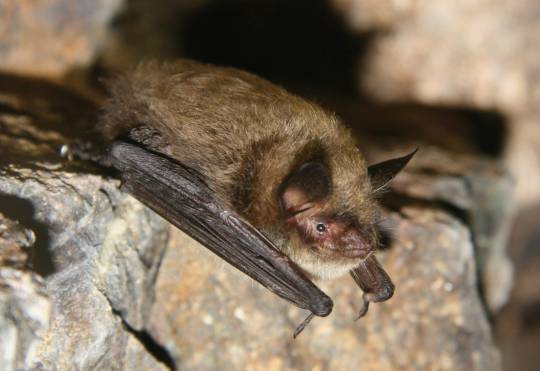


Going Batty for the Little Brown Bat
The little brown bat (Myotis lucifugus) is a species of mouse-eared bat that lives throughout North America, from northern Canada to the southern United States. They are most commonly found in deciduous forests, but they also roost in man-made structures or caves; anywhere warm and dark.
M. lucifugus is aptly named, as it’s a relatively small bat. At most, individuals weigh 12.5 g (0.44 oz) and have a wingspan of 27 cm (10.6 in). Females are typically larger than males. The color of their fur can range from tan or red to dark brown, though the fur on their stomachs is lighter than the rest of their body. In addition to their large ears, which gives them a great hearing boost, the little brown bat has exceptional eyesight and is sensitive to ultraviolet light. However, they lack a Jacobson’s organ, which in other animals is used to detect moisture-borne odor particles.
Like other bats, the little brown bat is primarily nocturnal, emerging at dusk and feeding intermittently throughout the night. Individuals emit about 20 calls per second while in flight, and use the corresponding information to avoid obstacles and detect prey. They feed exclusively on insects, including mosquitoes, beetles, and flies, and in a single night an individual may consume over 2/3 of its body weight in food. Because their source of food is generally seasonal, little brown bats are only active in the warmer months of the year. When the temperature drops to 0 °C (32 °F), individuals will enter a state of torpor, in which their heart rate may drop as slow as 8 beats per minute.
Mating takes place in the fall, just before the hibernation season. Males and females gather together in large groups to roost, in a behavior known as swarming. During this period, colonies average around 9,000 individuals; the largest recorded had over 180,000. Both sexes mate with multiple partners, and homosexual pairings are relatively common. This behavior continue throughout the hibernation period, and individuals will pair indiscriminately with active and torpid bats. Once mated, female bats store their sperm for the following spring; they then carry their pregnancies for 50-60 days. Each female gives birth to only one pup, which weighs about 30% of her body weight.
Pups grow rapidly, opening their eyes and ears within a few hours of being born and becoming completely weaned at 26 days old. After this, young transition to feeding solely on insects, though they may receive help from their mothers while learning the best techniques for catching prey. Females are sexually mature at only one year old, and males mature at two years old. Once they reach maturity individuals will leave to form their own roosting groups. In the wild, a little brown bat can live up to 34 years; however, many bats are predated upon by owls during the active season, and by raccoons while hibernating.
Conservation status: The IUCN has rated M. lucifugus as Endangered. Their primary threat is a fungus-caused disease known as white-nose syndrome; this disease is particularly harmful to the little brown bat due to their large congregations during the mating and hibernation period.
If you like what I do, consider leaving a tip or buying me a ko-fi!
Photos
Jason Corbett
Joseph Johnson
Rick Reynolds
#little brown bat#Chiroptera#Vespertilionidae#mouse-eared bats#microbats#bats#mammals#deciduous forests#deciduous forest mammals#urban fauna#urban mammals#caves#cave mammals#North America#queer animals#queer fauna
201 notes
·
View notes
Text

Chalinolobus gouldii | John Gould (1804-1881) | The mammals of Australia. v.3 (1863) | Flickr (Biodiversity Heritage Library)
392 notes
·
View notes
Text

White-nose syndrome
#white nose syndrome#wns#bats#tricolored bat#tricolored bats#Perimyotis subflavus#chiroptera#vespertilionidae#perimyotini#perimyotis#wikipedia#wikipedia pictures#nature#animals#microbiology#zoology#animal disease#mycology#veterinary mycology#fungal diseases#Pseudogymnoascus destructans#ascomycota#microbiologist#microbiological research#mycology research#mycologist#bat
53 notes
·
View notes
Note
🥚and plant? i want to ask for a bat but i'm gonna cry joy over any little animal. they are so good. so are plants.

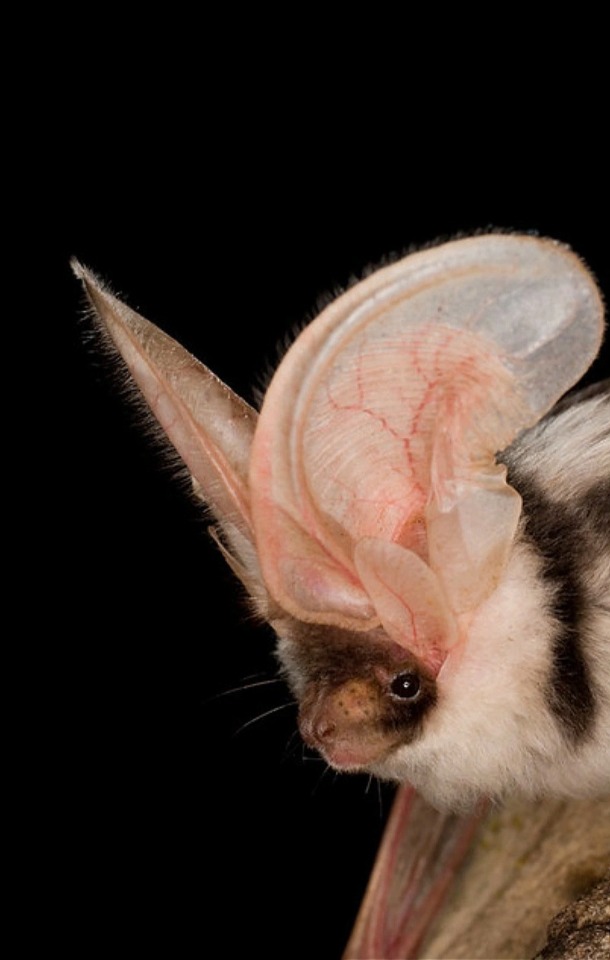
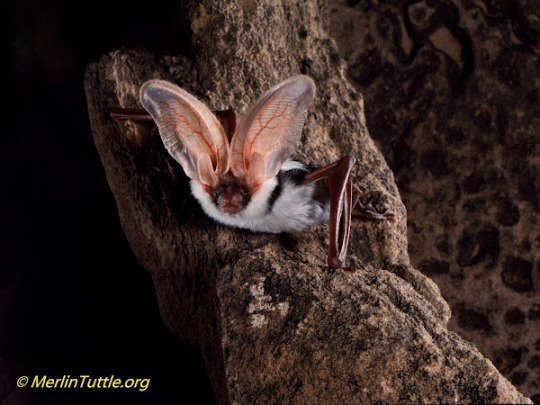
Spotted Bat! (Euderma maculatum)

Cornus florida urbiniana aka Magic Dogwood
53 notes
·
View notes
Link
#animal behavior#mimicry#greater mouse-eared bat#myotis myotis#vespertilionidae#chiroptera#bat#mammal
204 notes
·
View notes
Text

Oh to be a soutwestern myotis
pen and graphite, 2023
[ID: a black and white illustration of a bat with wings outstretched, staring upwards at a blooming white cereus. The background is sketchy black circular lines, and white dashed lines radiate from the flower. The wings of the bat extend beyond the picture's border. End ID.]
7 notes
·
View notes
Link
1 note
·
View note
Text

Bonsoir à tous~
Aujourd'hui je vous propose de découvrir la fiche de la Sérotine bicolore ! 🦇
C'est une espèce que l'on a rarement l'occasion d'observer et pour laquelle on cherche à améliorer nos connaissances sur sa répartition et ses effectifs ! ❤️
Je vous parlais de l'importance de l'acoustique lors de la présentation de ces petites fiches, la Sérotine bicolore est un bon exemple de son utilisation ! Durant l'automne, les mâles "chantent" afin d'attirer les femelles. Ces chants, inaudibles pour nous mais détectables avec les appareils adéquats, sont très caractéristiques pour la Sérotine bicolore. Les études acoustiques et le radiopistage vont ainsi permettre de déterminer les milieux fréquentés par l'espèce, les effectifs,... et ainsi améliorer les connaissances📃
La petite info bonus : Tous les ans des études à ce sujet sont menées dans le massif des Vosges par la CPEPESC Lorraine. C'est en référence à celles-ci que j'ai voulu représenter ma Sérotine bicolore la gueule grande ouverte, comme si elle était en train de chanter 🎶
J'espère que toutes ces informations vous intéressent ! N'hésitez pas si vous avez des questions ou des idées de sujets qui vous plairaient~
#bats#chiroptera#clip studio paint#cute art#cute bats#drawing#i love bats#illustration#small artist#sérotine#vespertilionidae
0 notes
Text
Schoolers sex and gay porn movieture jack off Mutual Jacking With
cute pink pussy fucked by raven
Young teacher having fun with lil student
Sexy teen with cute tits sucks cock before getting her pussy and asshole drilled
Gigi se la come toda
Myanmar girl bathing spy
Mature Latina milf in spandex
SLUTTY NIHARICA RAIZADA NAVEL AND HIP SHOW
Fucking Asian teen
Sexy teen playing his cock
#adipate#kilogrammetre#orthopsychiatry#Kenvil#forepole#Isleen#impresario#detrain#ringbarker#jumbucks#cytogenies#hard-handled#hatmaking#dancing#semiprofanely#lea#resembles#sclerectomy#Vespertilionidae#reconnoiterer
0 notes
Photo

Did you know that every Monday night 🌙 I mail out a special newsletter! 🤯 I include excerpts from my occult research, reflections on magical practice, and musings about the interweaving of art and spirit work (also pictures of bats looking ferocious/gorgeous) This week I wrote about Victorian Spiritualism and a little about magic and tabletop RPGs. 🦇 👻 Read all about it: phoebehildegard.substack.com #bat #vespertilionidae #witchcraft #seance #spiritualism https://www.instagram.com/p/CmagJWQLSDx/?igshid=NGJjMDIxMWI=
1 note
·
View note
Text

hehehehe
#just realized i forgot the e in vespertilionidae 💀💀💀#i was also trying to get the url nyctalus-noctula but i got to my limit for the day#zin speaks#bats
4 notes
·
View notes
Text
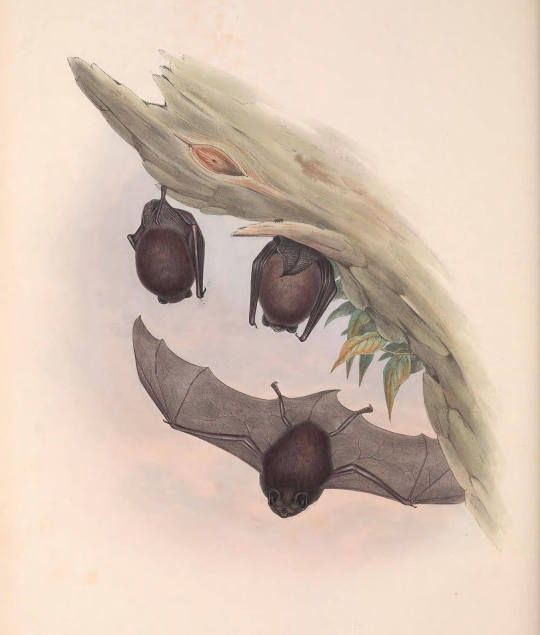
Chalinolobus morio | John Gould (1804-1881) | The mammals of Australia. v.3 (1863) | Flickr (Biodiversity Heritage Library)
247 notes
·
View notes
Note
can you pretty please identify these funny walkers for me
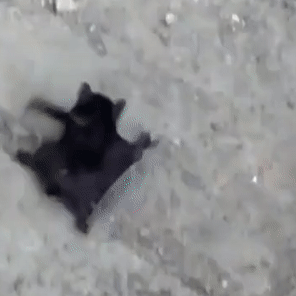
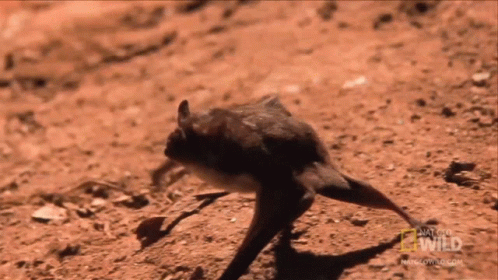
thamk you :3
The second one is an easy identification: that’s a common vampire bat (Desmodus rotundus)! They’re the only species of bat capable of fully supporting themselves on their wings and walking like that.
The first one is a little trickier because of the angle the video was taken from. The tail placement puts it in the family Vespertilionidae, and the ear placement is making me think Mouse-eared bat (Myotis). Maybe southern myotis (Myotis macropus) or Peters's myotis (Myotis ater)? Ultimately, I’d have to either see this little guy’s face or have a general idea of where it was spotted to narrow it down further!
93 notes
·
View notes
Note
Vespertillonid bats?
You might've been reading a Repost of one of my posts. I rarely call a bat by it's scientific name ( common names are more easily understood and I don't have binomial memorized as a concept for bats)
But they were likely reffering to Vespertilionidae , a family of Microbats
Which may or may not have been the family of bat in the post, as I do not know where you've seen this Word.
13 notes
·
View notes
